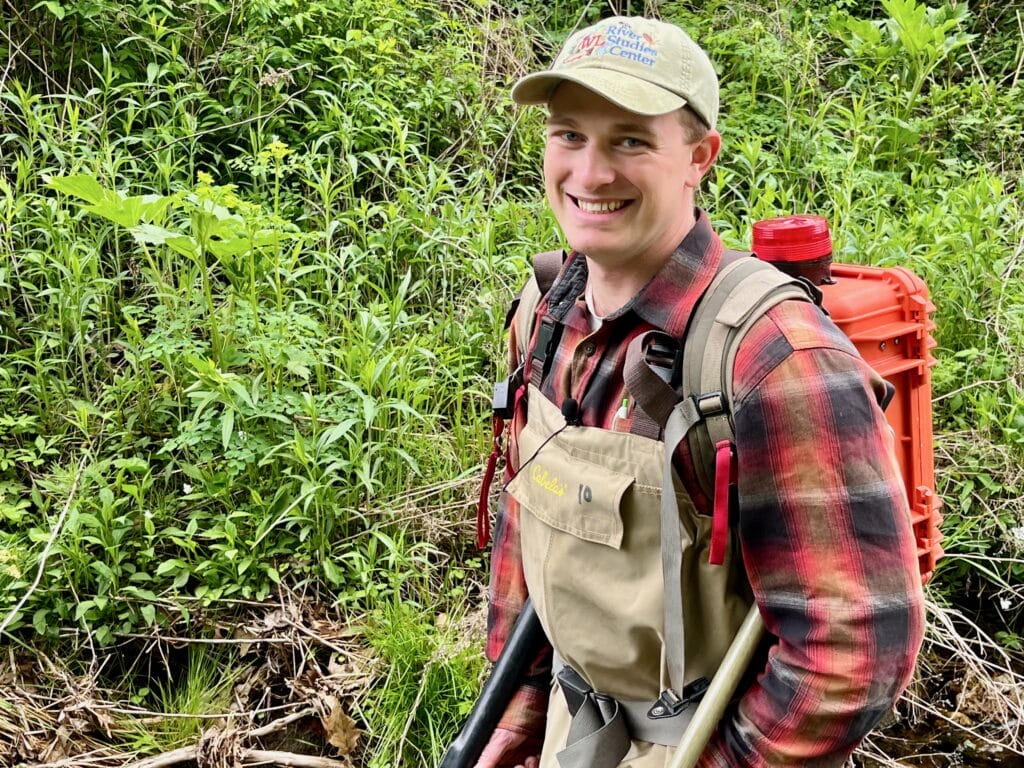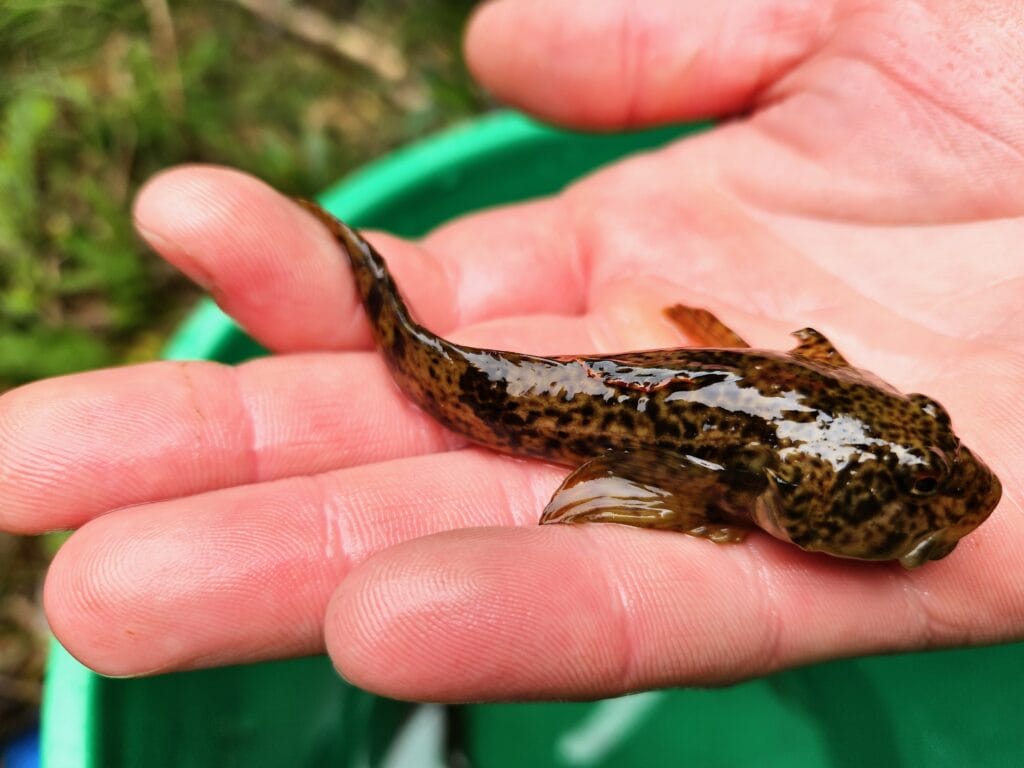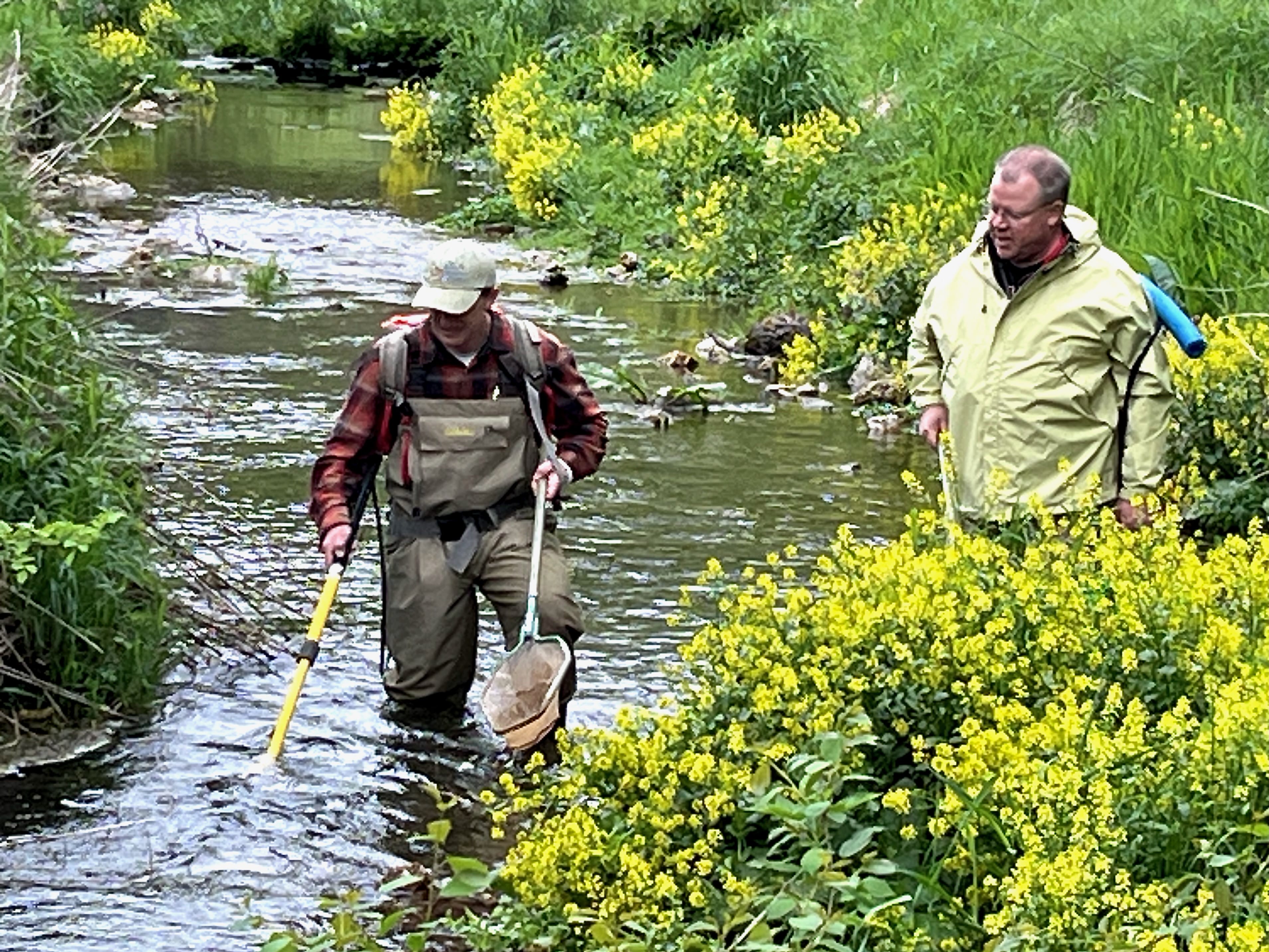Prior to meeting Evan Sirianni, my knowledge of sculpin consisted of occasionally looking at Muddler Minnows in a fly shop fly bin and wondering if they work.
Sirianni, a graduate student at the University of Wisconsin-La Crosse, recently held a field demonstration day on Maple Dale Creek near Viroqua, Wisc., to introduce his master’s degree project: “Deciphering Occurrence Patterns of Sculpin in the Kickapoo River Drainage.”
Sirianni’s project is supported financially by the Trout Unlimited Driftless Area Restoration Effort through a National Fish Habitat Partnership grant and the River Studies Center at UW-La Crosse. His advisors are Jason Freund and David Schumann.
By the end of the day, my knowledge of sculpin stood on a little firmer foundation.

The first thing that leapt out at me is that the average slimy sculpin Sirianni captured by electrofishing is much larger than the typical Muddler Minnow. Many of the specimens were around 3 ½ inches long, and all the sculpin I observed had some serious beef to them.
Maple Dale Creek is an excellent native brook trout stream that I have fished a few times, and I would say that if an average size trout and an average size sculpin in that stream engaged in mortal combat, the contest would end in a draw.
If you haven’t seen a live sculpin, they are flat-out beautiful creatures. Their bodies are a mottled combination of rich brown and deep amber. This functions as perfect camouflage, so that we anglers regularly walk right past them without ever seeing them.
Jason Freund mentioned that the name “slimy sculpin” is a bit pejorative, and I agree. I prefer to think of them as having a “high gloss” outer coat. Sculpin lack a swim bladder and are perfectly designed to dwell on the stream bottom and snarf up aquatic invertebrates and anything else smaller than themselves.
In addition, Muddler Minnow is a questionable name for a streamer meant to imitate a sculpin, because one, sculpin are not minnows. And two, sculpin require high water quality and a clean substrate of cobble or boulders larger than stream average. Sirianni captured the most sculpin from runs with slow to moderate current.

There is a great deal to be learned about sculpin, which are an understudied species according to Sirianni and all the scientists gathered at the field demonstration. And it is important for the scientific community to gain greater knowledge about sculpin according to Sirianni because, “Sculpin are a fantastic indicator species of good water quality and habitat. They are used in a multitude of studies looking at anthropogenic impact on streams.”
The goal of Sirianni’s study is to identify instream habitat and fish assemblage patterns associated with mottled sculpin and slimy sculpin in the Kickapoo River drainage. Over the summer, Sirianni will survey 60 different streams in the watershed. Each stretch of stream is electrofished and divided into 15 transects where depth, wetted width, water velocity, substrate composition, streambank cover and aquatic plant cover are measured. The research team expects the data collection to take most of the summer.
During the field day Sirianni demonstrated his methodology with volunteers assisting him. The volume of precise measurements and careful observations he will make over the course of the summer will be a test of perseverance. But this attention to detail is necessary to be able to draw meaningful conclusions regarding sculpins’ distribution and habitat preferences in the study area because so little is known about the specific habitat preferences, critical thresholds and interactions between sculpin.
Sculpin populations have been extirpated from many Wisconsin Driftless Area streams due to poor agricultural practices and the species’ small home ranges. Sirianni said findings from his project will be incorporated into resource management of streams where sculpins are present, and projects and efforts to reintroduce sculpin and improve their habitat. We hope to hear more about this summer’s field work at our next Driftless Symposium!



